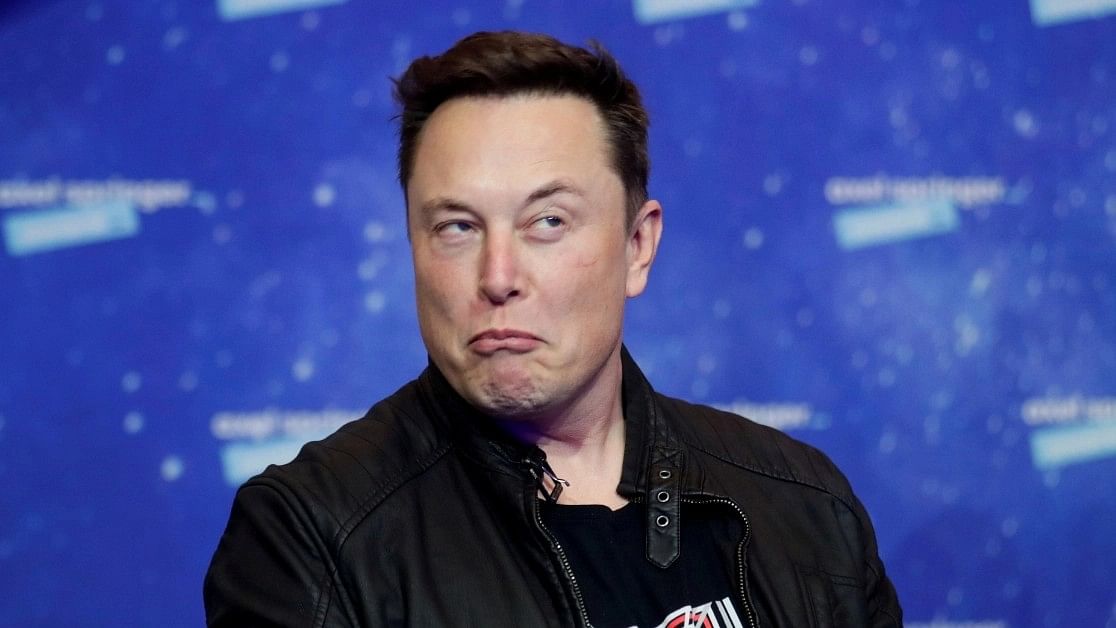
Tesla CEO Elon Musk.
Credit: Reuters File Photo
By Liam Denning
Guys, you were so close. If it wasn’t for that last little bounce of Wall Street optimism on the last day of September, Tesla Inc’s latest sales figure would have beaten estimates — just.
The more pertinent bit of that chart is actually the yawning gap on the left, tracing the steady drop in expectations for Tesla’s core business. For all the talk this past week of Tesla’s sales in China maybe pushing the quarter’s total to 470,000 — reflected in that uptick in the consensus forecast — the obvious rejoinder is: Who cares? Even if Tesla had reported that number, which would also have been way below what was expected earlier this year, take a look at the chart below and ask yourself if it would have changed the fundamental picture here.
It wouldn’t have, putting all the more focus on the much-hyped Oct 10 event where Chief Executive Elon Musk is expected to unveil “robotaxi” prototypes.
Bulls will cite the fact that deliveries were up 6 per cent, year over year. Recall, however, that Tesla said it was held back by factory downtime in the third quarter of 2023, flattering any increase. Some other numbers also set that 6 per cent in context. Through the first nine months of the year, sales are down 2 per cent. In order to hit the consensus figure for annual sales, Tesla now needs to deliver just shy of 499,000 vehicles in the final quarter, which would mean reaching a new record — and even then, annual sales would be below the level of 2023.
Assuming Tesla maintained its average selling price — which may be generous given continued discounting — these numbers imply revenue from auto sales of just over $20 billion in the third quarter. That would be up 5 per cent, year over year, but actually lower than in the final quarter of 2022, almost two years ago, when Tesla sold about 60,000 fewer vehicles.
There are two other noteworthy aspects to Wednesday’s figures. First, Tesla produced almost 7,000 vehicles more than it sold, reversing the liquidation of inventory that happened in the second quarter. For the 11 quarters since the start of 2022, Tesla has built more vehicles than it sold in eight of them, adding up to almost 113,000 excess vehicles overall. We can expect this to hit cash flow when Tesla reports full results three weeks from now.
Second, despite launching the Cybertruck in late 2023, sales of premium models haven’t taken off; third-quarter deliveries were actually slightly lower than in the fourth quarter of 2023, when Tesla added the angular beast to its higher-priced lineup. Possibly, in an autos market struggling in general with the rising cost of vehicle ownership, at least some $100,000 Cybertruck sales have cannibalized those of the Model S and X.
At best, Tesla looks set for another quarter of stagnant financials in its EV business. As in the second quarter, we can probably expect the company to have sold a lot of its hoard of greenhouse gas credits to shore up earnings — that is, rely on green subsidies (despite Musk’s ever more strident right-wing posturing).
Growth in battery EV sales has slowed in general and competition is rising, epitomized by the recent release of Nio Inc.’s latest Onvo electric SUV in China, priced 17 per cent below a comparable Model Y, and General Motors Co’s sub-$30,000 (after subsidies) Chevy Equinox EV on Tesla’s home turf. Above all, therefore, take it as read that Tesla’s robotaxi event next week will see Musk lean even harder into the narrative of self-driving vehicles, artificial intelligence and robots. How else to justify the dissonance of a stock priced at 99 times forward GAAP earnings for a company that has been essentially flatlining for almost two years.